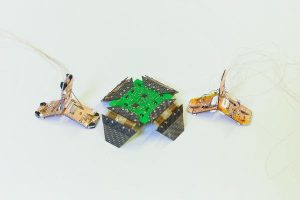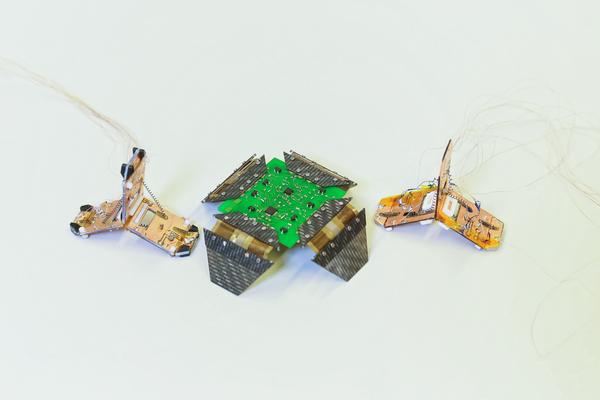Watch as the origami robot craze continues. This time, researchers from École Polytechnique Fédérale de Lausanne (EPFL) have mimicked their new robot on the movements of an inchworm.
In EPFL’s Reconfigurable Robotics Laboratory, researchers stray from conventional robotics and create lightweight robots that look similar to the Japanese art-form called origami.
The newest addition to the lab’s robot collection is Tribot, an inchworm-like robot that can simultaneously switch between crawling and jumping, which means it can jump over obstacles and then resume moving forward, according to EPFL.
The T-shaped robot is only 2-cm tall and weight just 4 grams. Another cool feature: Tribot can jump seven times its own height without having to be reset in between jumps.

How they did it
In order to create such a lightweight robot, the EPFL team had to stay away from traditional motors due to their heavyweight properties, so the members resorted to using a special kind of actuator and intelligent springs made from shape memory alloy.
The shape memory alloy they used was composed of Titanium and Nickel and was able to reform into its initial shape even if it had been deformed temporarily.
“After deformation, it is possible to make it return to its basic shape by heating it at a certain temperature,” according to the EPFL research. Heating can be done by sending electrical currents into the robot via wires or by using wireless micro-heaters.
“We gave the robot numerous actuators, each of which is insulated from the others,” said Zhenishbek Zhakypov, who co-authored the article. “By activating the actuators successively, the robot begins to crawl. The jumping mode depends on springs that are also made out of SMA.”
EPFL researchers will continue to create “robogamis,” granting them additional technology features such as sensors, accelerometers, and micro cameras in hopes of getting them all to interact with one another.
Story via EPFL.

